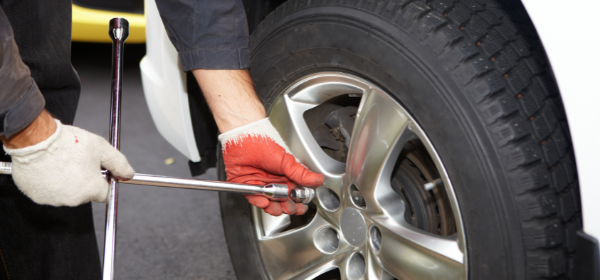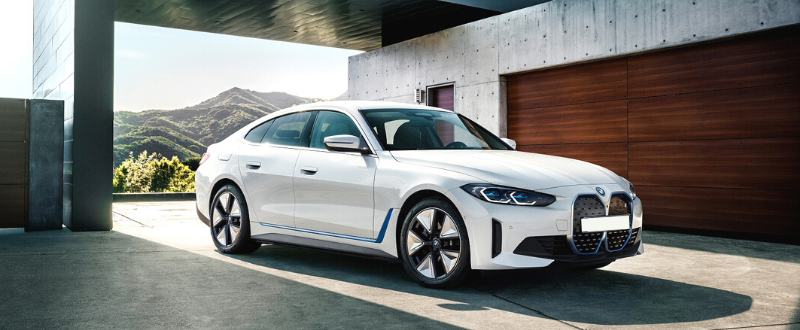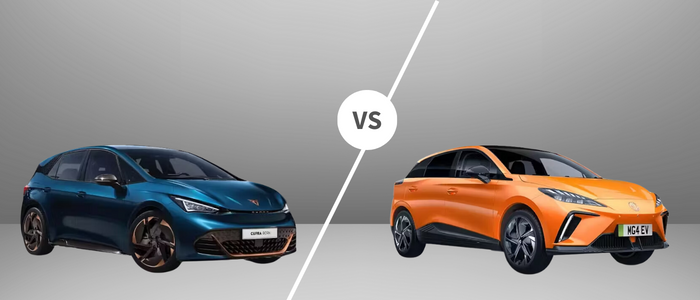
A guide to electric car maintenance
Electric cars are a great way to reduce your environmental impact, but they require regular maintenance and repairs in order to keep them running smoothly. As the popularity of electric cars continues to grow, so does the need for people to have a basic understanding of how to maintain and service them.
This guide will teach you the basics of electric car maintenance, including how to service the battery, oil and other fluids, and fix common problems. By following these tips, you'll be able to keep your electric car running like new for years to come.
Do electric cars need services?
Just like any other car, electric cars need regular tune-ups and maintenance in order to run smoothly and prevent costly problems down the road. In fact, there are a lot of factors to consider when it comes to electric cars and their needs.
While these cars don't need oil changes, tune-ups, or emissions checks, but they do need to be plugged in regularly. If you're not comfortable doing your own maintenance on an electric car, there are plenty of service centres that can help.
Many people mistakenly believe that electric cars don't require any maintenance, but that's not true. Electric cars do need services, but the services they need are different from the services petrol and diesel cars require.
What maintenance does an electric car need?
Electric cars don't require tune-ups, oil changes, system flushes and replacements of air filters like regular cars do. However, they still need some maintenance. The most important maintenance for electric cars is keeping the battery pack healthy.
The battery pack should be inspected every 6 months for signs of wear and tear. If the car is used very often, the battery pack should be inspected every 3 months. The connectors and cells in the battery pack should be clean and free of corrosion. If there is corrosion, it can be removed with a toothbrush and a solution of baking soda and water.

A guide to electric car maintenance
Checking the tyre pressure
To check the tyre pressure of your car, you will need to start by finding the valve steam. This is typically located on the side of the tyre. Next, use a pressure gauge to measure the air pressure in the tire. The recommended air pressure can be found in the car's owner manual or on a sticker inside of the driver's door. If you don't have a pressure gauge, you can use your thumb to estimate how much air is in the tire.
If the air pressure is too low, add air to the tire using a pump or a compressor. If it is too high, release some of the air by pressing on the stem of the valve with your fingers.
Checking fluid levels
If you're an electric car driver, it's important to check the fluid levels of your car on a regular basis. The most important fluids to check are the brake and power steering fluids, as well as the engine oil. Checking these levels can help you catch any potential problems before they become too serious, this process is simple and only takes a few minutes.
The battery fluid level should be checked monthly, and the motor fluid level should be checked every time you change the oil. You can find the fluid levels by looking for specific markings on the car. If you're not sure where to look, your owner's manual will tell you exactly where to find them.
It's important to keep the fluid levels in your electric car topped off, because low levels can cause damage to the battery or motor. Not checking the fluid levels regularly can also lead to decreased performance and shorter battery life.
Checking brakes on an electric car
One key advantage of electric cars is that they don’t require regular brake pad replacements like traditional petrol and diesel cars do. However, it’s still important to check your brake pads regularly on electric cars, just as you would with a traditional car. The brakes on electric vehicles go through a lot of wear and tear, this is because these types of cars require a lot of braking power in a very short amount of time. Electric motors can generate a lot of torque very quickly, which can cause the car to slow down or stop suddenly.
If your brake pads are worn down, it can cause damage to your rotors, which will be expensive to repair. Additionally, if your brake pads aren’t replaced when they need to be, it can lead to decreased braking performance and even an accident. If you’re not sure whether your brake pads need replacing or not, take your car to a mechanic for a quick inspection.
How to change a tyre on an electric car
When it comes to changing a tyre on an electric car, it's actually a lot easier than doing it on a petrol or diesel car. There's no need to worry about sparks flying when you're using the jack, and you don't have to worry about getting your hands dirty. Here is a step-by-step guide on how to change a tire on an electric car.
Park your car in a safe place. Make sure that the area you are parking in is level and free from obstructions.
Block the wheels of the car with rocks or bricks to keep it from moving while you are changing the tyre.
Locate the spare tyre and jack near the back of your electric car. The spare tyre will be in a compartment under the floorboard, and the jack will be located in a panel next to the spare tyre. If you can't find the spare tyre, check the owner's manual - it might be hidden in one of the storage compartments.
Once you've found the spare tyre, take off the hubcap (if there is one) and loosen the lug nuts. Don't take them all the way off - just loosen them enough so that you can remove the tyre.
The rest is easy, simply place the spare tyre onto the wheel, tighten the bolts and you're on your way!
Checking why your car won’t start
If you own an electric car and it won't start, there are a few troubleshooting things you can do before taking it in for repair. The first thing to check is the charging port. Make sure that the plug is securely plugged into the car and that nothing is blocking the port. If it's plugged in correctly and nothing is blocking it, try charging the car for a few hours. If that doesn't work, check the battery. The battery may need to be replaced or recharged. If neither of those solutions work, take your car to a mechanic to have it looked at.

Electric car battery maintenance
Batteries are the heart of an electric car. They store the energy that powers the car, and they need to be strong and reliable. Modern electric car batteries are made up of lithium ion cells. These cells are very efficient, and they can store a lot of energy in a small package.
How to check your battery
Electric car batteries are also very durable. They can withstand a lot of abuse, and they don't wear out as quickly as some other types of batteries.
It's important to be able to check your electric car battery regularly so that you can catch any problems early. There are a few things you can look for and test to help you do this.
One thing to check is the state of charge. This can be done with a voltmeter. The voltage should be between 12 and 13 volts when the car is off. When it's running, it should be 14.4 volts or higher.
Another thing to check is the electrolyte level. If it's low, you'll need to add distilled water to the battery cells. Be sure not to overfill them, as this could cause problems too.
The last thing to check is the terminals and cables. They should be clean and corrosion-free. If they're not, use a wire brush to clean them off before reconnecting them.
How to charge your battery
Electric car batteries need to be regularly recharged in order to keep the car running. If the battery runs low, it will eventually die, and the car will stop working. There are a few ways to recharge an electric car battery:
1) At home - most electric cars come with a charging cord that can be plugged into a standard household outlet. This will take a few hours to fully charge the battery.
2) Public charging stations - there are now many public charging stations around the UK that can be used to recharge electric car batteries. These stations usually require a payment card or membership, and will take between 30 minutes and 4 hours to fully charge the battery.
3) Plug-in hybrid cars - some plug-in hybrid cars can also be plugged into a standard household outlet.
How to keep the battery healthy
A car battery is an important part of a car and needs to be taken care of so it will last a long time. These are just a few tips on how to keep a car battery healthy.
1. Keep a charged battery entirely full, this will ensure that the battery can’t be discharged too much, which can damage it over time.
2. Clean the battery contacts with a clean cloth every month or so. This will help to prevent corrosion and build up on the contacts, which can also lead to problems.
3. Properly charge the battery when it’s low.
4. Be sure to replace the battery every five years, or according to manufacturer specifications.
5. Don't let the battery sit after a charge, at least not for too long. Overcharging can damage the battery and shorten its life. Many chargers have lights or other indicators that let you know when the battery is fully charged.
6. Always follow the instructions provided by the manufacturer on how to properly store and maintain your battery.
7. Keep the battery healthy is by keeping it in a cool place. If it’s too hot, the battery could overheat and die.

Frequently asked questions about electric car maintenance
How often do electric cars need to be serviced?
Electric cars are often considered to be more environmentally friendly and economical than traditional petrol or diesel cars. However, there is a common misconception that electric cars do not require regular servicing like traditional petrol or diesel cars. In fact, electric cars do require regular servicing, but the intervals between services are typically longer than those for traditional petrol or diesel cars. For example, here in the UK, electric cars need to be serviced every 12 months or 12,000 miles, whichever comes first.
Are electric cars cheaper to maintain?
Electric cars are cheaper to maintain than petrol or diesel cars, a new study has found. The study, carried out by the RAC Foundation, looked at the costs of running electric, petrol and diesel cars over a period of five years.
It found that electric cars are cheapest to maintain, with maintenance costs amounting to £2,500 over the five-year period. Petrol cars were second cheapest to maintain, with costs amounting to £2,900 over the same period. Diesel cars were the most expensive to maintain, with costs totalling £3,700 over five years. The study also found that electric cars are cheaper to fuel than petrol or diesel cars.
Electric car maintenance compared to combustion engines
Electric cars are becoming more and more popular, but what is the cost of maintaining them?
These cars have far fewer moving parts than combustion engine cars, so the maintenance cost is likely to be lower. However, the batteries do need to be regularly checked and replaced eventually, which can be expensive.
There is no oil or filter to change on electric cars, and the brakes last much longer as there is no brake dust. There are a few things that electric car owners need to keep in mind, however. One is that the battery needs to be regularly maintained in order to function properly. The other is that the brakes may need to be replaced more often than usual, as they tend to wear out more quickly on electric cars.
Latest Posts

Jeep Avenger Review 2024
Meet the Jeep Avenger, the brand’s...

A Comprehensive Kia Stonic Review
See for yourself if this could...

Cheap Vans to Lease 2024
Let's explore some of the cheapest...

Exploring Excellence: Isuzu D-Max Review 2024
In this Isuzu D-Max review, we'll...

Cupra Born vs MG4 Comparison
GB Vehicle Leasing delve into the...









































